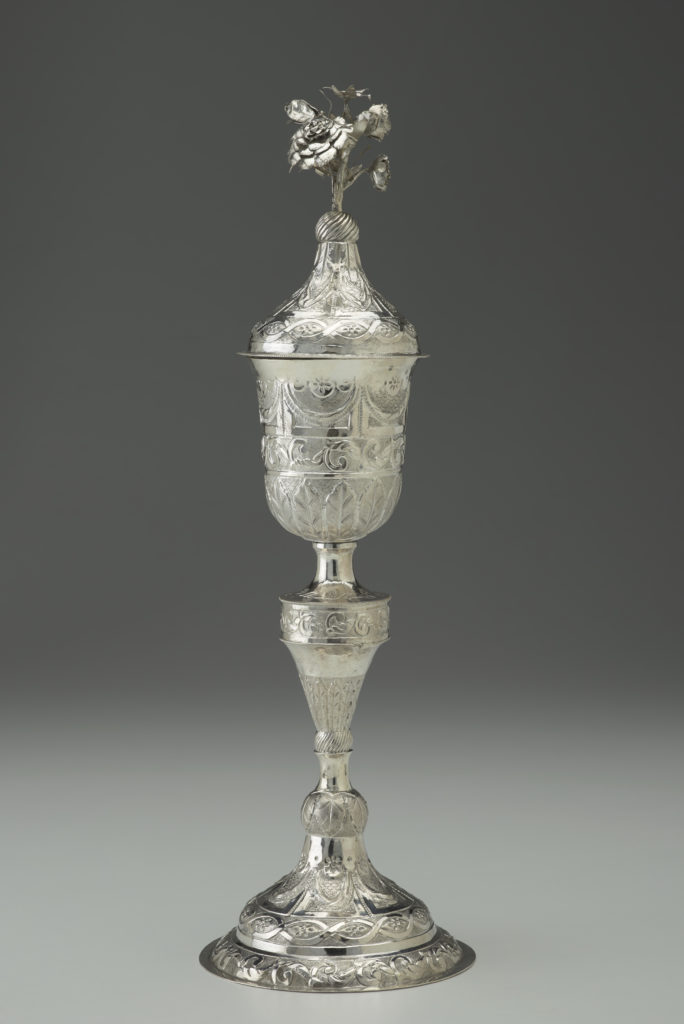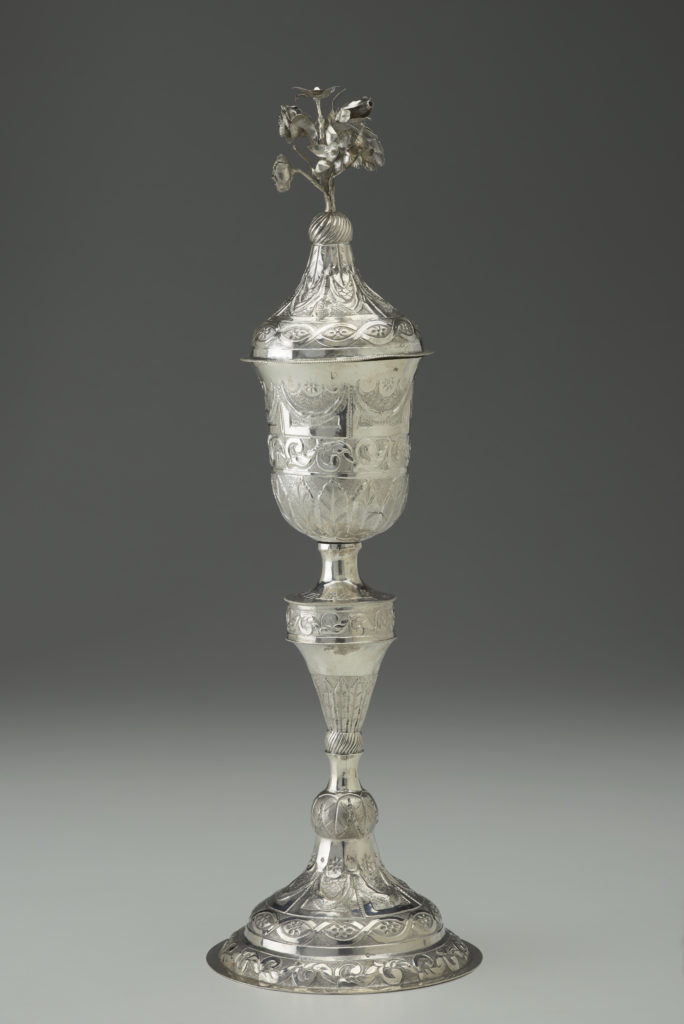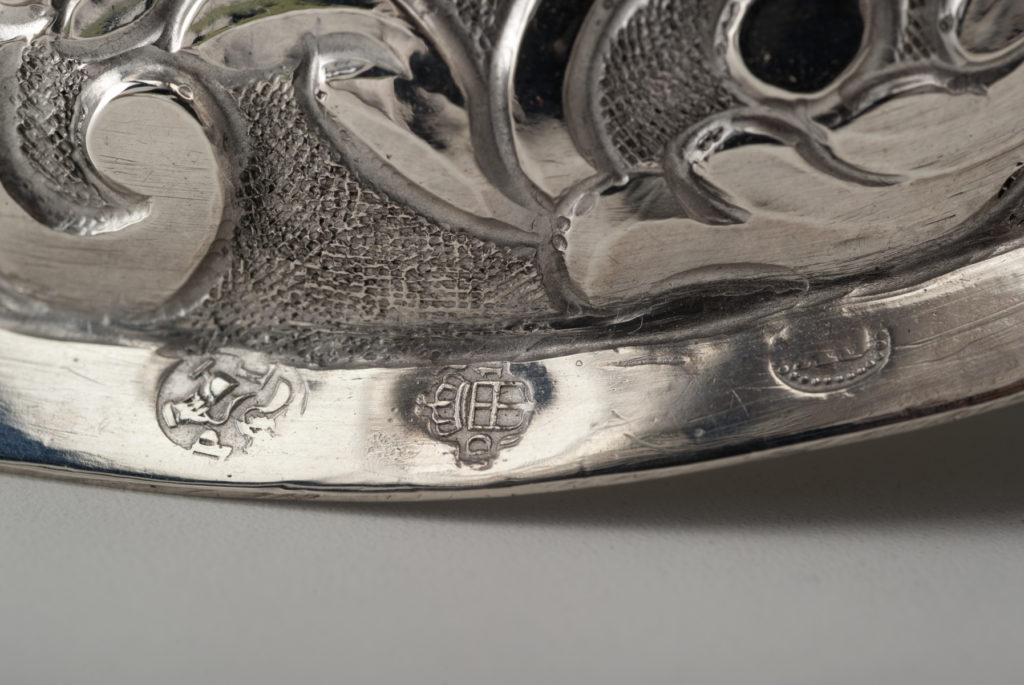Kiddush Goblet (work of art)
Artwork Info
Key Ideas
- This goblet does not have any traditional Jewish symbols or Judaic references on it. The designs are a series of floral patterns from the base, up through the stem, to the bloom or blossom design at the top.
- Kiddush, which means “sanctification” or “separation,” is the Hebrew blessing said over a cup of wine on the Jewish Sabbath (from sundown on Friday night to sunset on Saturday) and other festivals and holy days. In translation the Kiddush begins: “Blessed are You, Lord our God, Sovereign of the universe, Creator of the fruit of the vine.”
- This is one of the few items in the NCMA’s Judaic collection that was created by a Jewish artisan. The Piedmont region, part of the Kingdom of Savoy-Sardinia, was more lenient toward its Jewish community and allowed Jews to work as silversmiths.
Learn More
Jewish silversmith Pacifico Levi was active in Turin, in the northwest district of the Piedmont region of Italy. Jews in this area had received special permission from the king to work as silversmiths. This occupation was off limits to most Jews in Italy and in Europe as a whole, until they achieved emancipation (equal citizenship and rights under the law). Jews achieved emancipation throughout the Republic of Italy in 1848. Levi worked for both Jews and Christians, and the goblets he made did not feature Jewish symbols. The objects he created were suitable for both Jewish and Christian ceremonies, as well as for daily use.
Ornate cups with lids were in style among wealthy Jewish families in the kingdom of Piedmont in northwestern Italy. With a mix of Italian and French influences, Piedmontese (or Savoyard, in reference to the Kingdom of Savoy-Sardinia) Judaica is noted for its sophisticated design and artistry. The covers of Piedmontese kiddush cups are topped with floral arrangements and motifs, and the cup itself is in the shape of a tulip.
The small artist’s mark on the outer rim of the foot (or base) depicts a hand pouring a pitcher, with another hand supporting a basin below the pitcher. This image represents the Levites, who were descendants of the ancient Hebrew tribe responsible for assisting in the ancient Temple as musicians and singers, and assisting the Temple priests in their duties. One way they helped was to wash the hands of the Temple priests before they recited the Priestly Blessing as part of the Temple service.
Additional Resources
Resources for Teachers:
- Watch a video of the Friday night (Shabbat) home ceremony that includes the use of the kiddush cup.
- Read an article about the techniques of silver chasing and repoussé.
- Explore the history of Jewish communities throughout Italy.
- View a map of the Piedmont region of Italy.
Resources for Students:
- Watch a video of the Friday night (Shabbat) home ceremony that includes the use of the kiddush cup.
- Watch a video about chasing and repoussé, and learn how to make your own work of metal art using simple materials.
- Explore another kiddush cup from the Jewish Museum of London.



